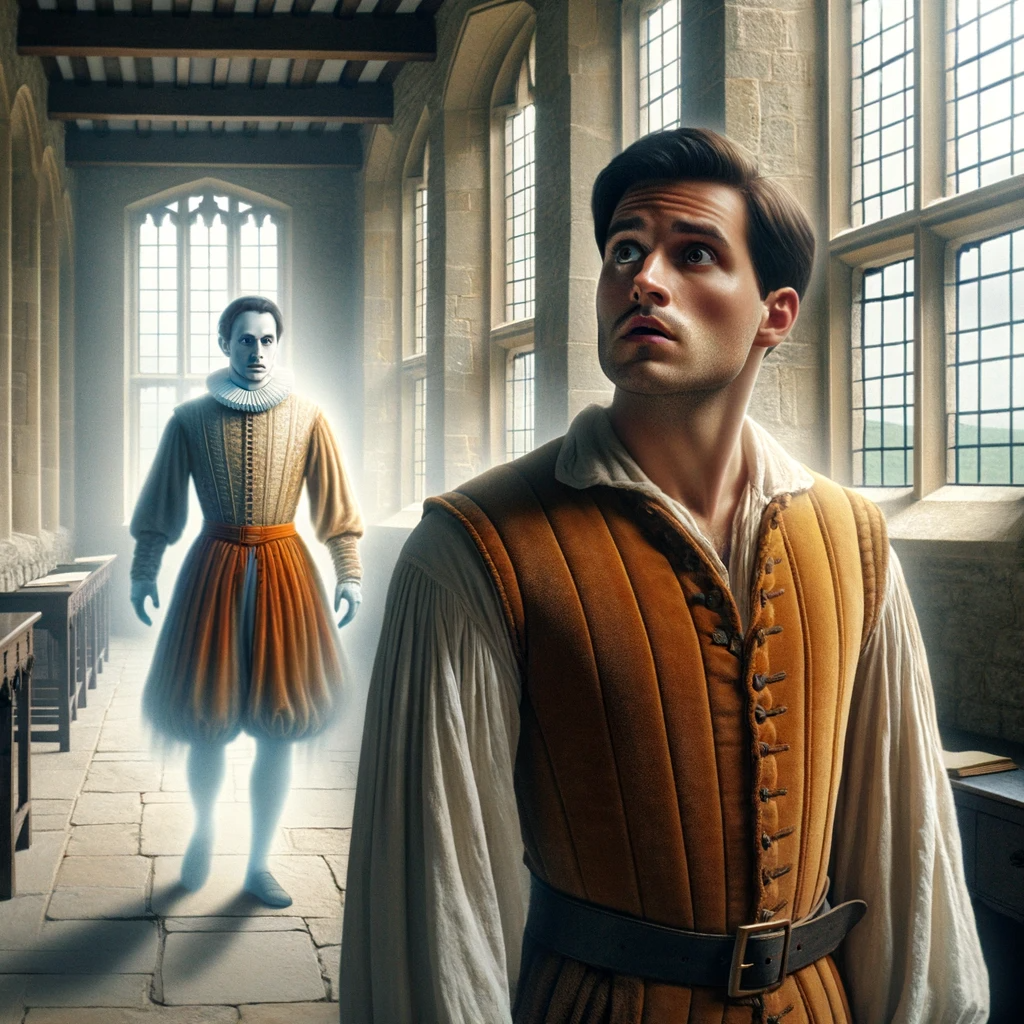Written Confession: Glimpse of a Ghostly Officer at Stokesay Castle
The following written confession was submitted via email:
I am English and my wife is American, from Oregon, she has lived in England all our married lives dating back over twenty years. She, like me, has a great love of history and it is normal for us to visit historical buildings and places. In May 2015 we were spending a few days in Stratford-upon-Avon, going to theatre performances in the evening and touring around during the day. On 22nd May we went to Stokesay Castle in Shropshire. To call it a castle is a slight misnomer as it is really more of a manor house with fortifications, including a moat and a south tower. The tower and the main manor buildings date from the years 1285-1305 (according to the guide book). There is also an ornate gatehouse, not built for defence but for show; it dates from the years 1639-1641. The whole place is a fantastic survival as it is so complete, giving a real idea of what it would be like to live in the household of a lord of the manor in the Middle Ages. It is also in a beautiful spot in a very leafy, rural location, just under twenty miles from the Welsh border and about fourteen miles north-west of Ludlow.
We were there on a beautiful afternoon – blue skies with white and grey clouds, bright and full of birdsong. There were probably about fifty or so other visitors wandering about. The atmosphere was relaxed and peaceful, no hint of anything eerie or strange.
South Tower ground floor room.
My wife and I had parted for a few minutes while I poked around the ground and second floors of the tower via an internal staircase. As her knees were paining her my wife stayed on the first floor (the only entry to the tower being via an exterior flight of steps from ground level). She was alone in the only room, which was spacious and bright, the stone being pierced by five windows as well as the door. She was staring out of the window, thinking of nothing, with the door at about four o’clock to her. Out of the corner of her eye she sees the head and shoulders of a man with short, dark hair a buff-coloured tunic with an orange waistcoat or shirt and she heard fast, heavy footsteps, as if the person was wearing boots. He headed off towards an alcove which contained a window. At first my wife thought it was me, then realising it was not, because I was wearing a blue t-shirt and sandals. Curious, she went over to the alcove and no one was there. The person could not have left as the only way in and out was via the door and she would have seen him leave.
At no time was my wife afraid, but, naturally she was a bit startled when she realised what had happened. She does not say it was a ghost, she simply says she cannot explain what it was.
The hall solar and south tower.
To me her description sounds like someone from the English Civil War period. The first civil war began in 1642 and ended in 1646. It was fought by the Royalist forces, loyal to King Charles I (1625-1649) against the armies of parliament, with which the king was in dispute. Soldiers often wore buff coats, as they were called, coats made of oil-tanned leather designed to stop a sword cut. Orange tawny was a colour frequently worn, having been, for example, the recognition colour of the parliamentary forces at the Battle of Edgehill in 1642 (there being no differentiation of the two sides which both wore a variety of uniforms, coat colours being chosen by the colonel who raised each different regiment). As it happens Stokesay was garrisoned by Royalist troops and in June 1645 was forced to surrender to local Parliamentarian forces. It seems as if no one was killed as the garrison’s position was hopeless, being few in number and ill-equipped. The guide book states that a fierce clash took place not far away a few weeks later when the Royalists attempted to retake Stokesay.
My feeling is that my wife saw an officer in charge of the castle during the civil war. Given that he seemed to be wearing orange tawny he is, perhaps, more likely to have been a parliamentary officer at the time of the skirmish which prevented the Royalists retaking the place.
To me it is significant that she was on her own with her mind blank; just being, rather than actively thinking about something. I feel she picked up on a moment of tension which imprinted itself on the stones three hundred and fifty years before. I wonder if the thing played out entirely in her mind, and may not have been visible to anyone else if they had been there. By this I mean that her mind was the screen on which the images played – at the time she had no knowledge of any part the place played during the civil war and her knowledge of the military history of that era was just about zero – she has a much better knowledge of the Wars of the Roses (1455-1487) so if she was to actively think of someone with a military connexion it would have much more likely to have involved someone in armour.
I have never seen anything like this and as an archivist and historian I am jealous!

